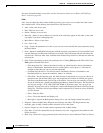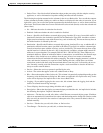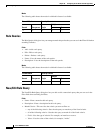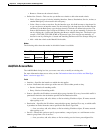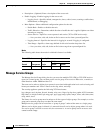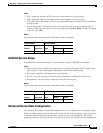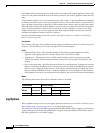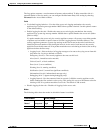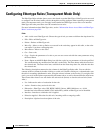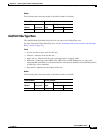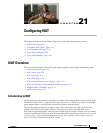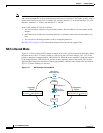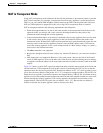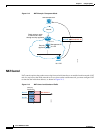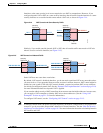
20-16
Cisco ASDM User Guide
OL-16647-01
Chapter 20 Configuring Access Rules and EtherType Rules
Configuring Ethertype Rules (Transparent Mode Only)
Configuring Ethertype Rules (Transparent Mode Only)
The EtherType Rules window shows access rules based on packet EtherTypes. EtherType rules are used
to configure non-IP related traffic policies through the security appliance when operating in transparent
mode. In transparent mode, you can apply both extended and EtherType access rules to an interface.
EtherType rules take precedence over the extended access rules.
For more information about EtherType rules, see the “Information About Access Rules and EtherType
Rules” section on page 20-1.
Fields
• Add—Adds a new EtherType rule. Choose the type of rule you want to add from the drop-down list.
• Edit—Edits an EtherType rule.
• Delete—Deletes an EtherType rule.
• Move Up—Moves a rule up. Rules are assessed in the order they appear in this table, so the order
can matter if you have overlapping rules.
• Move Down—Moves a rule down.
• Cut—Cuts a rule.
• Copy—Copies the parameters of a rule so you can start a new rule with the same parameters using
the Paste button.
• Paste—Opens an Add/Edit Rule dialog box with the copied or cut parameters of the rule prefilled.
You can then make any modifications and add it to the table. The Paste button adds the rule above
the selected rule. The Paste After item, available from the Paste drop-down list, adds the rule after
the selected rule.
The following description summarizes the columns in the EtherType Rules table. You can edit the
contents of these columns by double-clicking on a table cell. Double-clicking on a column header sorts
the table in ascending alphanumeric order, using the selected column as the sort key. If you right-click
a rule, you see all of the options represented by the buttons above, as well as Insert and Insert After items.
These items either insert a new rule before the selected rule (Insert) or after the selected rule (Insert
After.)
• No—Indicates the order of evaluation for the rule.
• Action—Permit or deny action for this rule.
• Ethervalue—EtherType value: IPX, BPDU, MPLS-Unicast, MPLS-Multicast, or a 16-bit
hexadecimal value between 0x600 (1536) and 0xffff by which an EtherType can be identified.
• Interface—Interface to which the rule is applied.
• Direction Applied—Direction for this rule: incoming traffic or outgoing traffic.
• Description—Optional text description of the rule.



